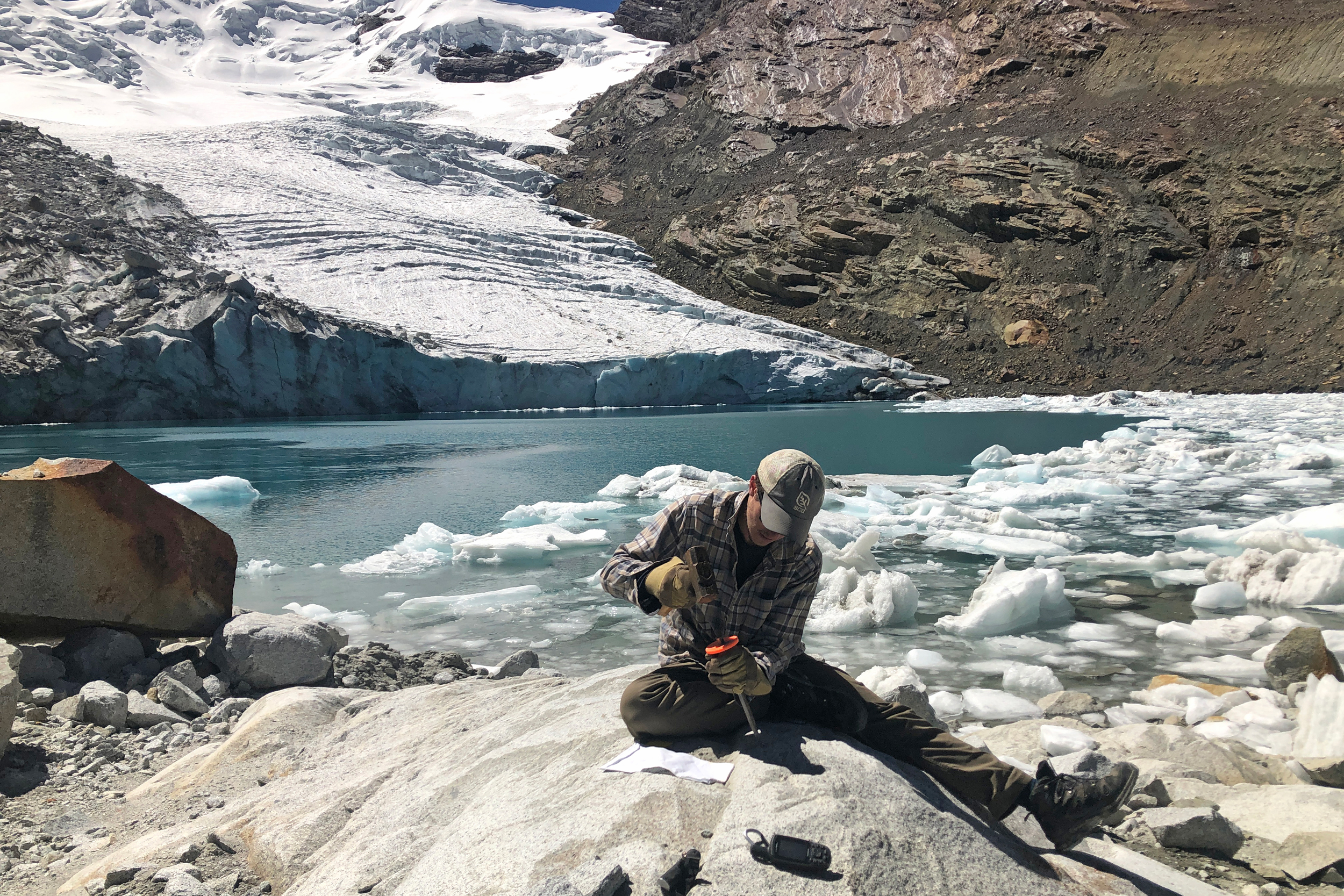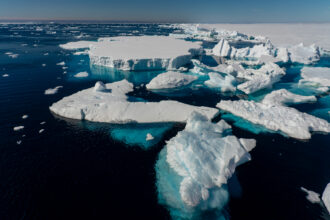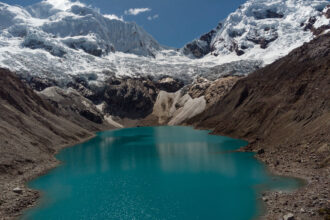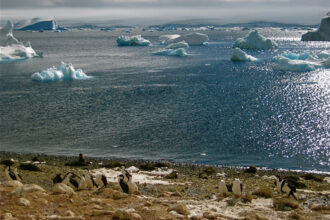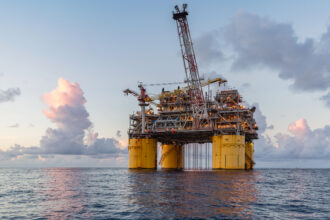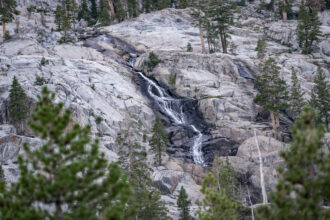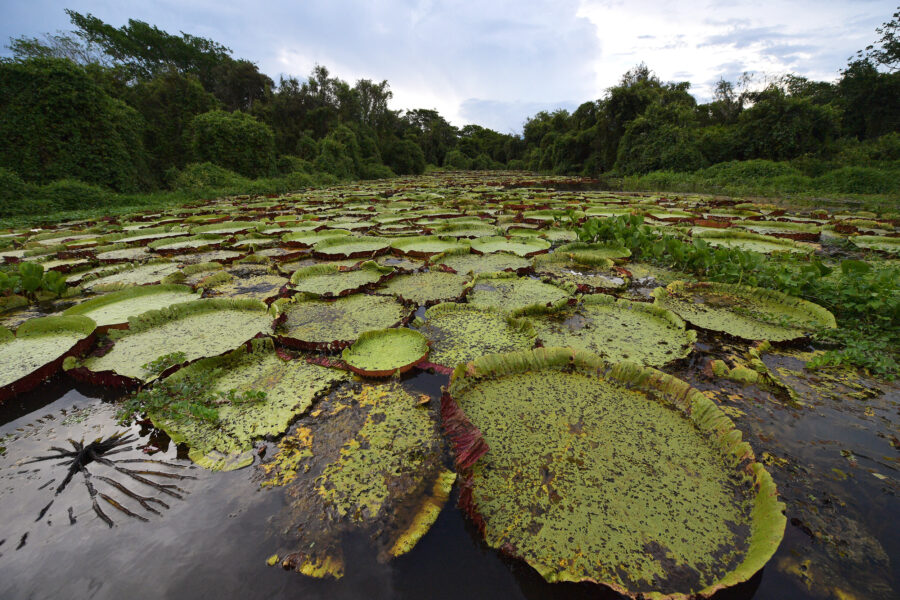Along a valley of the Cordillera Blanca in Peru, Emilio Mateo set out on a 10-mile hike up to the Queshque Glacier. Following the tracks of llamas and cattle, Mateo, a researcher at the Aspen Global Change Institute, and his research assistant were on their way to collect glacier samples. Armed with a hammer and chisel, and empty backpacks to carry back 35 pounds of bedrock samples, their goal was to get as close as possible to the glacier and reach a still-forming glacial lake that wasn’t there 15 years ago.
Now, drawing on those samples and others from Bolivia and Colombia, a new study says tropical glaciers in the Andes are the smallest they’ve been in the past 11,700 years.
“It’s a sad milestone to hit for these glaciers,” said Mateo. But the milestone helps researchers understand the unprecedented changes happening in the tropical Andean region, he explained.
Glacier retreat has accelerated over recent decades, a crisis both for nearby communities that rely on glacial meltwater and farther-flung places bedeviled by sea-level rise. But other glaciers, like those in North America, were smaller 6,000 to 10,000 years ago, in the early Holocene period, than they are now.
After studying rare chemicals called beryllium-10 and carbon-14 in bedrock—like the ones in the samples Mateo collected—researchers found that these bedrock locations in the Andes had never been without glacier cover for at least 11,700 years. As such, these tropical glaciers are now smaller than they’ve ever been since the dawn of human civilization.
“Everywhere else, in the Himalayas and Alaska, the glaciers aren’t to that point yet. They are still receding, but they are not as small as they once were at the beginning of the Holocene,” said Mateo.
In North America, glaciers were indeed smaller than they are today for a fairly large part of human history, according to a 2023 study. So the findings from these Andean samples were shocking.
“This is not a result that we expected to find. We thought that this was decades away,” said Drew Gorin, lead author of the study and a Ph.D. candidate at the University of California, Berkeley.
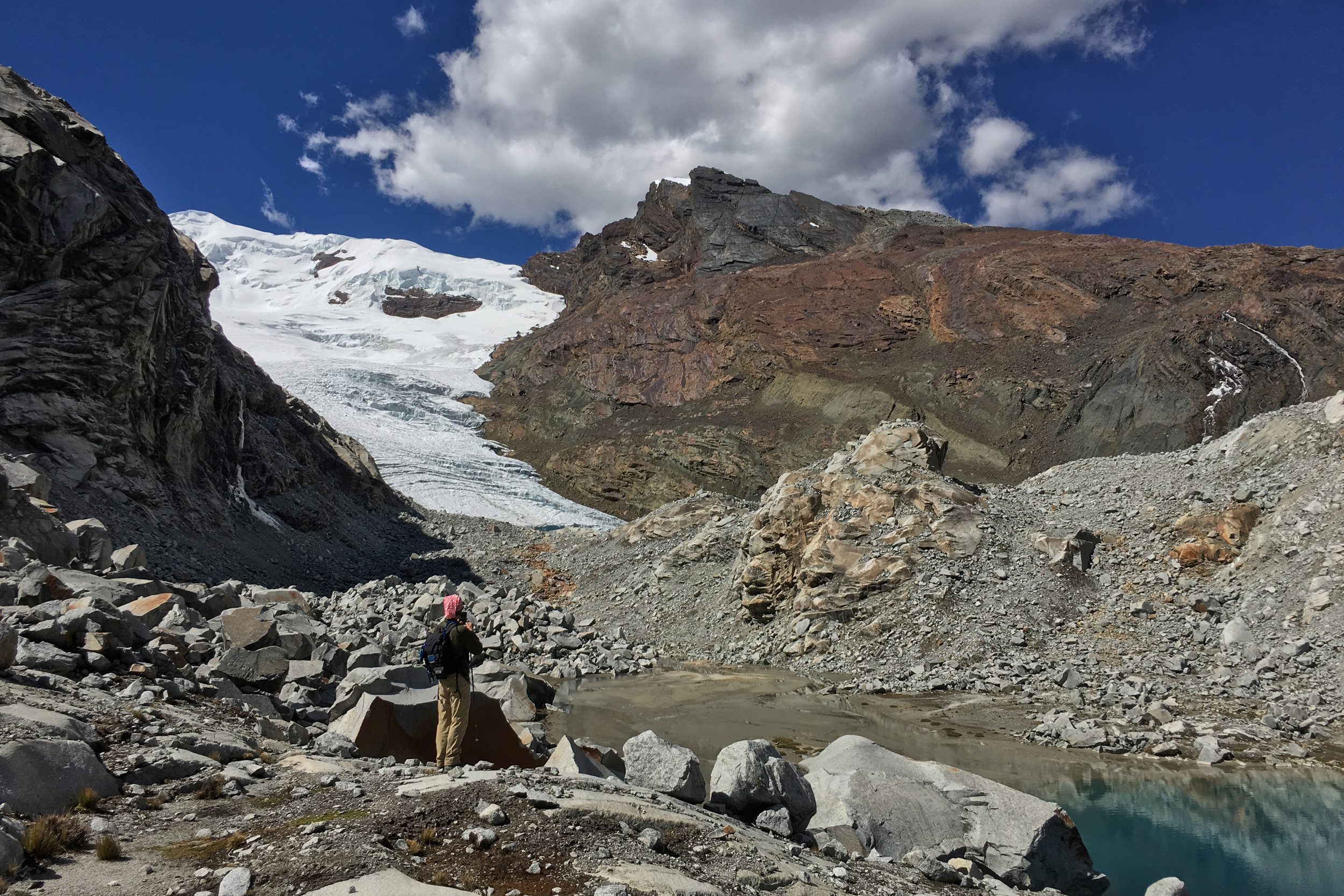
The researchers used a technique called cosmogenic nuclide dating to measure the rare chemicals in the bedrock; rare chemicals pile up in the rock if they’re exposed to the sky. If a glacier covers the bedrock, it can’t accumulate these chemicals. As soon as the glacier recedes, “it’s like you started a timer and now the chemicals are accumulating,” said Gorin.
The researchers found very low concentrations of these chemicals, showing that this rock had never been exposed to the sky before.
With such surprising results, the researchers wondered if perhaps the glacier eroded the rock that had the chemicals in it in the first place.
“We spent the better part of three or four years after we got these results trying to think of another way to explain what we found,” Gorin said.
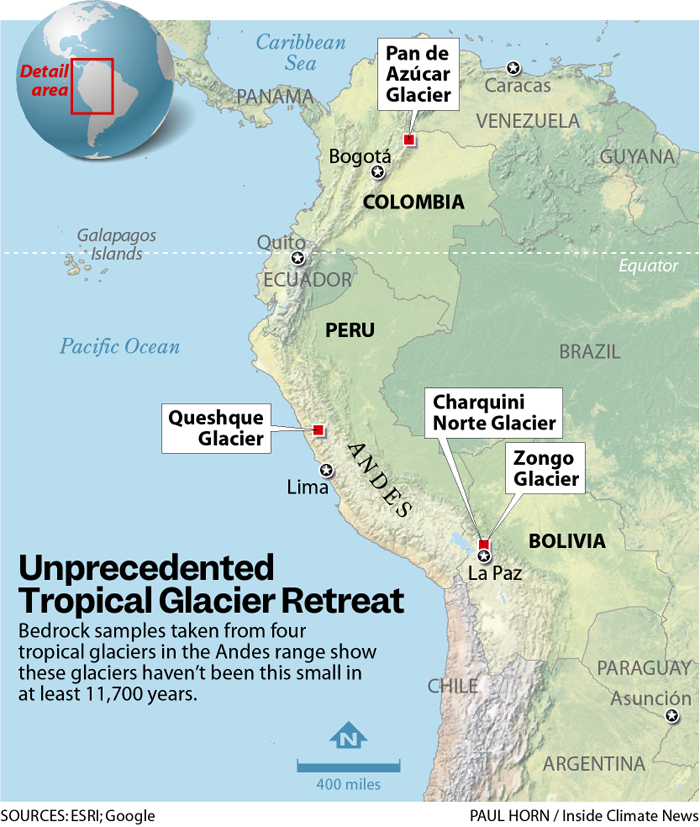
But these samples were taken from four different glaciers, and not all glaciers are equally erosive, Gorin explained. That varies based on factors such as climate and precipitation. The researchers were left with the only other explanation, Gorin said: These glaciers are the smallest they’ve ever been since at least the beginning of the Holocene.
A question Gorin is hoping to answer is where else glaciers are smaller than they’ve ever been. Other researchers wonder the same.
“The immediate question that comes to mind is: are we reaching something similar in central Chile?” said Claudio Bravo, a researcher at the Center for Scientific Studies in Chile who was not involved in the study. “We don’t know if this applies to the glaciers in the Andes in Chile and Argentina, which have different conditions.”
The Andes, which stretch over South America’s western side, pass through Venezuela, Colombia, Bolivia, Argentina and Chile. Not all the glaciers in the Andes are considered tropical.
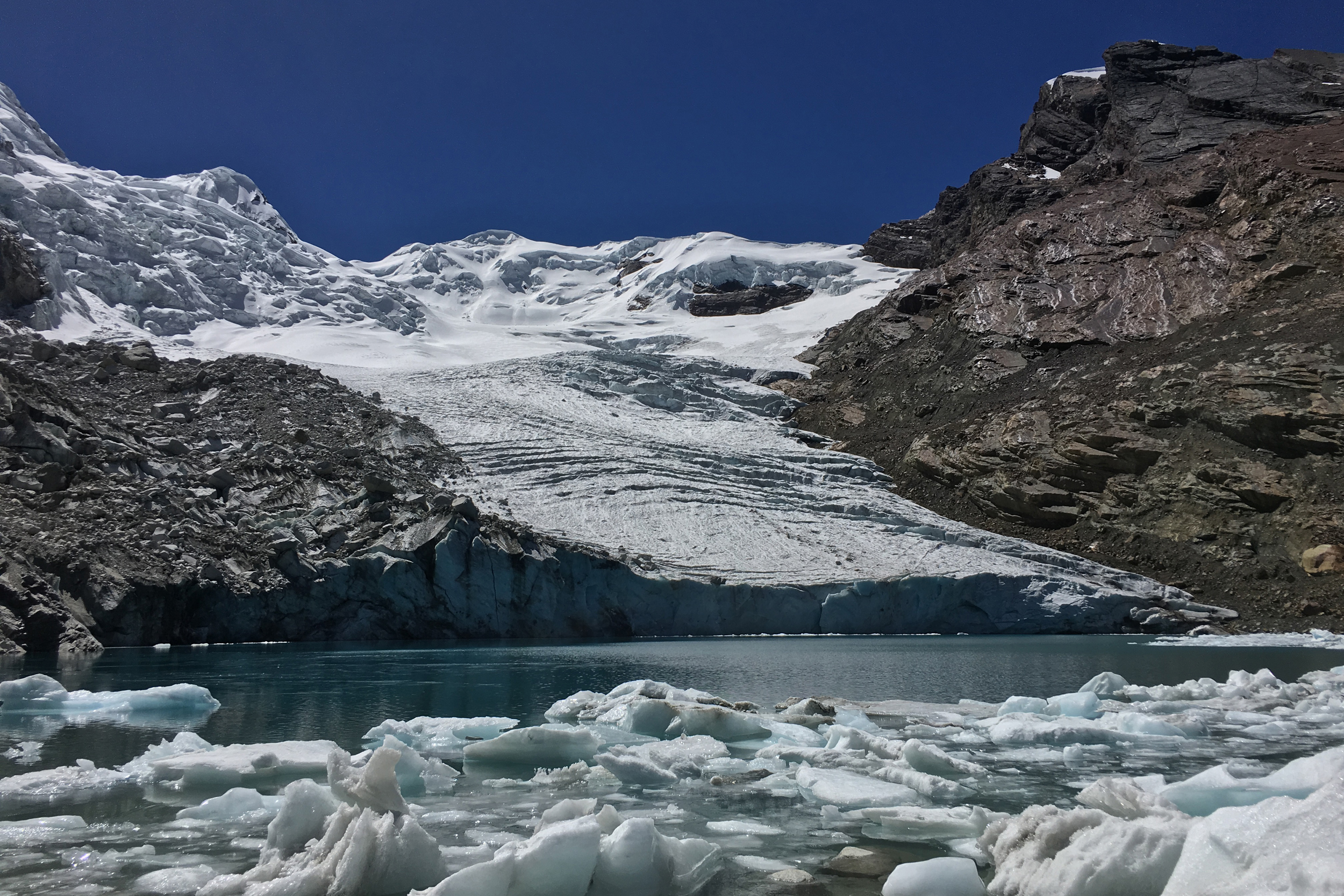
The glaciers in the Andes are an important water supply for millions of people in South America, particularly for those living in the Andean highlands of Bolivia, Chile and Peru, according to a UNESCO 2018 report. During droughts, glacial meltwater becomes critical.
“How are we going to adapt to a world, to mountains, that will no longer have the water they used to have?” said Juan Luis García, a geography professor at the Pontifical Catholic University of Chile.
More than just a water resource, glaciers are sentinels of climate change, the study says. “There is a climate today that is not comparable to the ranges we have had for the last 10,000 years,” García said.
For García, the study raises a larger question of what this means for the Andean region and changes in the glaciers.
“There is an important challenge as a scientific community to show these changes with good research,” he said. “And to warn that a new era is coming: one in which there will be no glaciers in the mountains.”
About This Story
Perhaps you noticed: This story, like all the news we publish, is free to read. That’s because Inside Climate News is a 501c3 nonprofit organization. We do not charge a subscription fee, lock our news behind a paywall, or clutter our website with ads. We make our news on climate and the environment freely available to you and anyone who wants it.
That’s not all. We also share our news for free with scores of other media organizations around the country. Many of them can’t afford to do environmental journalism of their own. We’ve built bureaus from coast to coast to report local stories, collaborate with local newsrooms and co-publish articles so that this vital work is shared as widely as possible.
Two of us launched ICN in 2007. Six years later we earned a Pulitzer Prize for National Reporting, and now we run the oldest and largest dedicated climate newsroom in the nation. We tell the story in all its complexity. We hold polluters accountable. We expose environmental injustice. We debunk misinformation. We scrutinize solutions and inspire action.
Donations from readers like you fund every aspect of what we do. If you don’t already, will you support our ongoing work, our reporting on the biggest crisis facing our planet, and help us reach even more readers in more places?
Please take a moment to make a tax-deductible donation. Every one of them makes a difference.
Thank you,

